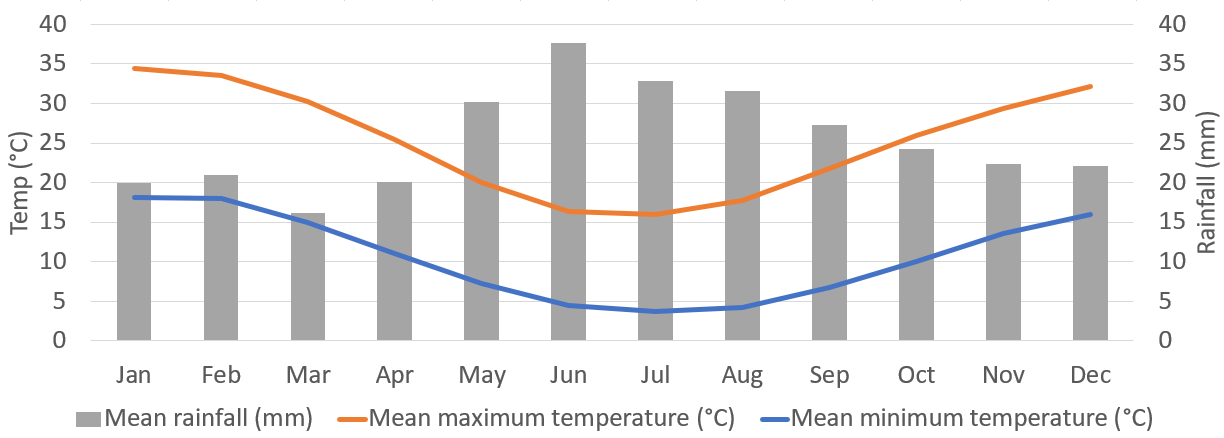FLORA
The plant communities found in the Flinders ranges are generally influenced by soil type, level of exposure to the sun and wind. The ability of plants to penetrate the strata to access deeper moisture reserves is another component. Some plant communities you pass through on the walks we offer include:
Acacia: These species are highly beneficial to the environment as they have nitrogen-fixing bacteria living on their roots. Acacias improve soil condition by taking nitrogen from the air and converting it so other plants can use it. This feature allows acacias to grow in very poor soil where other plants cannot.
Cypress pine: These are usually found with grasses and herbs growing like a carpet under them. There are a few young pine trees in the Flinders Ranges area and some bigger ones close in to Wilpena Pound Resort. They were very popular building resources for settlers as they are resistant to white ants. So they used them for fence posts and building huts and almost wiped out all the population of cypresses. They grow in deep red-brown clay loams (type of soil). This is one example of a Gondwana plant species that still survive today. It is the only Pinetree native to South Australia.
Eucalypts: There are many eucalypt species and each one has specific conditions that they prefer. Eucalypt trees that have multi-stem trunks are known as Mallees. The word Mallee comes from the aboriginal word Mali which means water, as some Mallee roots provide fresh drinkable water when cut. The red river gum has some interesting characteristics. They’re predominantly found in creek beds. The roots of the red river gum grow very deep to tap into underground water storages. Seedlings of river red gum’s have very long roots that enable it to survive drought and survive from a young age. This is why it is thought that some of the river red gums are thousands of years old, as they can lie dormant for tens of years when there is no rain. When stressed from lack of water the river red gum will drop whole limbs without warning, making them very dangerous to camp under. They also drop a percentage of their leaves during summer and periods of drought to reduce the amount of water they need it to survive. The leaves are spearhead shaped and their hard waxy surface reduces water loss by transpiration. The tree even rotates its leaves during hot days so there is minimal amount of surface area facing the sun.
Grassland: This can consist of Hammock and Tussock grasses e.g. spear grass that tend to grow on wide open plains in the region. Both types of grasses are found on poor quality soil and stony hills. These communities are particularly useful as a habitat for a diverse range of rare and common insects, reptiles and birds. Porcupine grasses commonly known as Spinifex is very prickly. This type of grass grows well in bad soil and on stony hills where it forms dense communities. Spinifex grasses grow from the centre outward and when the middle dies it creates a ring like a structure. Kangaroos often lie in these rings for protection from the wind. Spinifex contains highly flammable compounds that burn intensely in a fire. Many natural fires in the Flinders Ranges are caused by spinifex thanks to lightning strikes.
Yakka: Found on skeletal soils on ridge tops. Yakka grows well in poor soils. They are very slow-growing, respond well to fire and are endemic to Australia. Endemic floras are species of plants that can only be found in a particular region state or country. The Yakka is a highly evolved member of the sclerophyll community, thriving on poor soils and being highly adaptable to fire. A very hardy plant and unique plant. The Yakka has many uses, the resin extract can be used as adhesive, the fleshy heart shape bulb inside the trunk can be eaten and external parts of the trunk can be burnt and inhaled to improve the sinuses.
Other plants of the region:
Mallee saltbush is a grey bush was very insignificant flowers and you can see any time. Salvation Jane which you are likely to see whole swathes of across hillsides. It has blue flowers in spring which is also called Patterson’s curse as it is a weed. It is killing a lot of the native plants because it takes a stranglehold once it gets going.
Mallee grey box and peppermint box trees also dot this landscape. White box which occurs occasionally is confined to this district of the Flinders Ranges and is more widely distributed in Victoria New South Wales and Queensland. Inter-disbursed are thickets of the golden wattle which appeared as dense undergrowth since the bushfire in 1988.
South Australian blue gum and sugar gum also frequent this area. Silvertails has a whitish leave herb with spherical pink fluffy flower heads which bloom in spring. Silver wattle is a small rounded shrub and grows up to 3 m which has yellow balls flowers in late spring.
Drooping Sheoks is a tree that grows to 9 m high has dark branchlet’s, often pendulous with leaves in whorls.
Kangaroo grass grows and flowers throughout the year when conditions permit as does Lemon-scented grass.
FAUNA
Kangaroos: There are three species of kangaroos found in the Flinders Ranges. The grey kangaroo also called a scrubber, is mainly found amongst dense Mallee scrub. The euro or hills kangaroo is another common species. The small females have long grey fur while the heavier males range through to dark brown and often have a rusty covering, especially about the neck and shoulders. The red kangaroos name aptly describes most of the mature males while the females also known as blues flyers have blue-grey fur. Red kangaroos prefer wide-open spaces and are the most abundant of the kangaroo species.
Wallabies: The Flinders and Gammon ranges are home to the yellow-footed rock wallaby. These animals are beautifully marked with white cheek and flank stripes. Their bodies are a soft grey while their arms and feet are rusted yellow and the long cylindrical tails of the same yellow are barred or ringed with brown. The populations within the Flinders Ranges are found on very steep rocky slopes and are mostly associated with permanent water. A good time to observe wallabies is in the early morning during summer. Yellow-footed rock-wallabies are generally more active at dawn and dusk, otherwise they are very difficult to observe, as they are well camouflaged and hidden high up on the rocky escarpments, often hiding and crevices and caves.
Birds of prey: The black-shouldered kite is commonly seen between Hawker and Wilpena. The small birds of prey spend a great deal of time hovering over open grasslands and saltbush. Black kites are commonly seen in the far north. They are soaring birds and may not flap their wings for a considerable period, but correct their flight continuously. They are carrion feeders and spend most of their time looking for food. There are also several species of falcon in the far north. The most commonly seen are brown falcon’s which are very swift hunters.
Usually wedge-tailed eagles hunt by themselves, but they can be seen to hunt in pairs for larger game. They have a massive wingspan making them easy to distinguish from afar. They make very large nests, preferring to establish them in large trees although they have been recorded nesting on rock ledges in the Flinders Ranges
Snakes: The western brown snake, mulga or king brown snake, death adders and the inland taipan or fierce snake are all found in the far north. Although the snakes are not common and generally try to avoid contact with humans, they are still dangerous and venomous. They are quiet stalkers of prey and are well camouflaged. The death adder is probably an exception being mostly nocturnal, lying in wait for its food with the tip of his towel twitching to attract prey.
South Australian Bats: Bats are insectivorous and consume large volumes of food some up to their own body weight in at six tonight. They use large amounts of energy for flying to keep warm. Most species of bats live in colonies.
Rodents: There are many species of rodents including long-haired rats, stick nest rats and hopping mice. Some species are able to live without water obtaining sufficient amount from their food. That’s why you can find them in the Flinders Ranges. You are more likely to see these species at night.
Spiders: Spiders can be divided into two groups, hunting spiders and the web-building spiders. The huntsman spider shelters under bark and often has its white messy web hidden under a bark sheet. It is not dangerous but will rear up and threaten if provoked.
The Simpson Desert trapdoor spider is also a hunter, buts burrows in sand. Unlike other trapdoor, it lives in shifting sand and has to use sticky woven silk web to hold the sand in place. Often found amongst the elegant wattle in the Flinders Ranges, is the Golden Orbweaver and its spectacular web. They will shake the web with threatening and this seems to keep large birds away, while small birds are sometimes caught in the web. In some cases, the birds become the meal but this is rare, flying insects are the main diet.
Dragons: These are long-legged lizards with long tapering towels and skin that feels like coarse sandpaper. The bearded Dragons will often be spotted sitting atop a tree stump or a fence post or some even bask in the middle of the road. They are not fussy in their taste eating insects, flowers and soft herbage. The male Tawny Dragon is a small colourful Lizard showing bright blue orange and yellow colourings. The female is grey or brown. They are found amongst rocks in the mountainous country only as far north as the northern Flinders Ranges. The painted dragon is as brightly coloured as the Tawny Dragon but prefers to live and forage in sandy hills amongst the low vegetation and ground litter.
Skinks: The sleepy or shingle back lizard is a regular site in almost all the Flinders Ranges. Hundreds of them could be seen near roads, crossing them or having perished as they are often run over. They move very slowly so can be hunted by feral animals. Amongst the Rocky outcrop‘s and the final small piles of black pellets with white ends can be found. These pellets denote the home of the Gidgee skink. It is a moderately large skink up to 25 cm long and with a spiny tail, which uses had a great effect to resist being dragged from its rocky retreat.



 30 years' experience providing walking holidays worldwide
30 years' experience providing walking holidays worldwide

